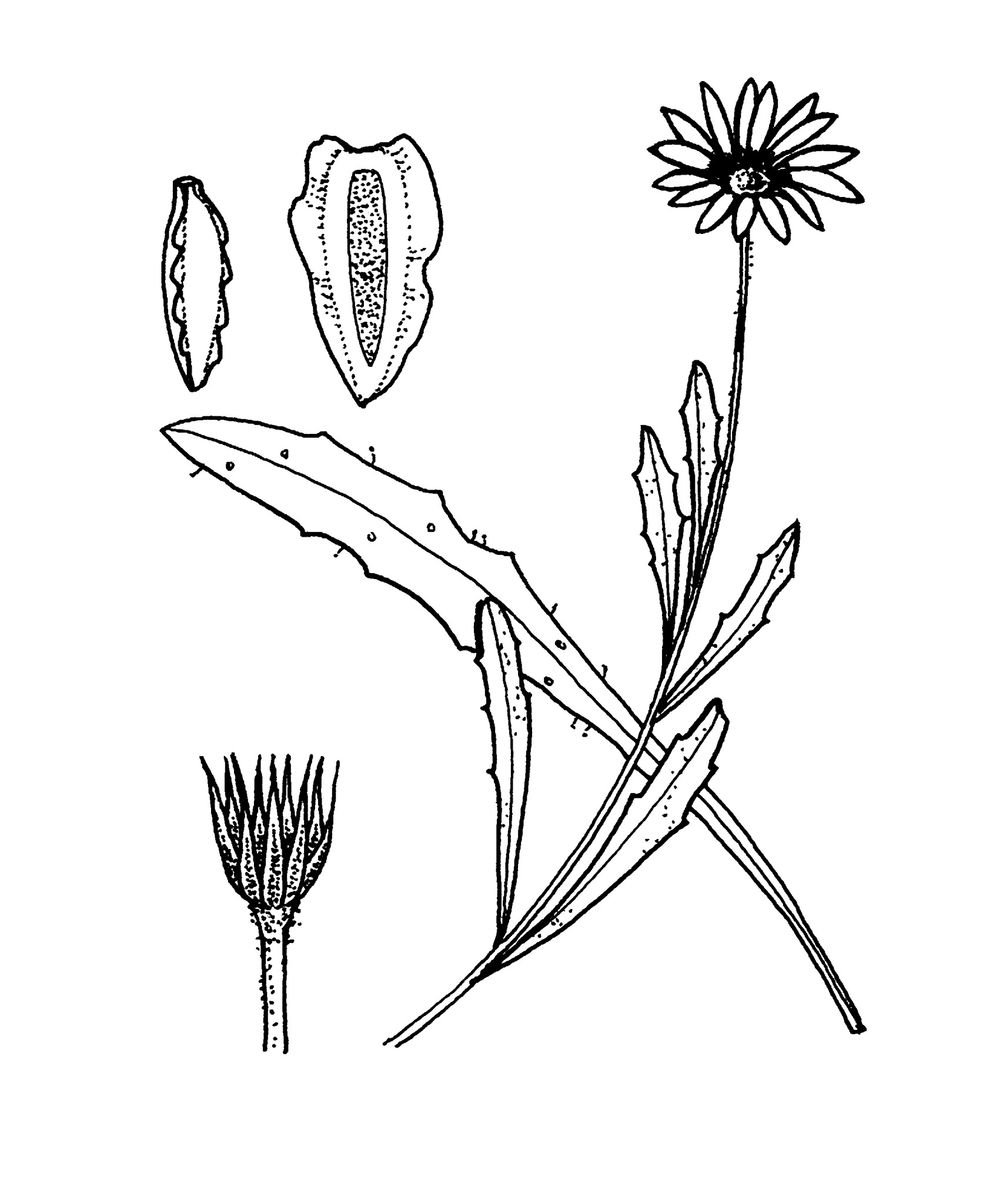
Greek di — two, morphe — form, theke — box, referring to the achenes of the ray and disk florets, which are of a different shape.
Annual or perennial herbs or shrubs, hairy. Stems erect or ascending, simple or branched. Leaves along stems, alternate, margins entire to divided. Capitula radiate, terminal, solitary, with stalks. Involucral bracts in 1 row, overlapping, equal. Receptacle flat. Ray florets female, ligulate, yellow, orange, purple or white, dark below. Disk florets bisexual or functionally male, tubular, yellowish. Achenes dimorphic, outer ones cylindrical or 3-angled, often winged, inner ones compressed, with thickened margins. Pappus absent.
Two species have become naturalised in Australia. Considerable hybridisation has been performed within the genus to produce a range of cultivars and seed mixes often used for bedding.
Achenes of 2 types; involucral bracts in a single row. Flowers with a central brownish 'eye'.
About 20 species from south and tropical Africa.
Source: (2002). Dahlia. In: . Horticultural Flora of South-eastern Australia. Volume 4. Flowering plants. Dicotyledons. Part 3. The identification of garden and cultivated plants. University of New South Wales Press.
